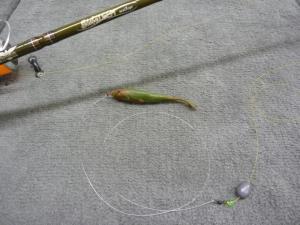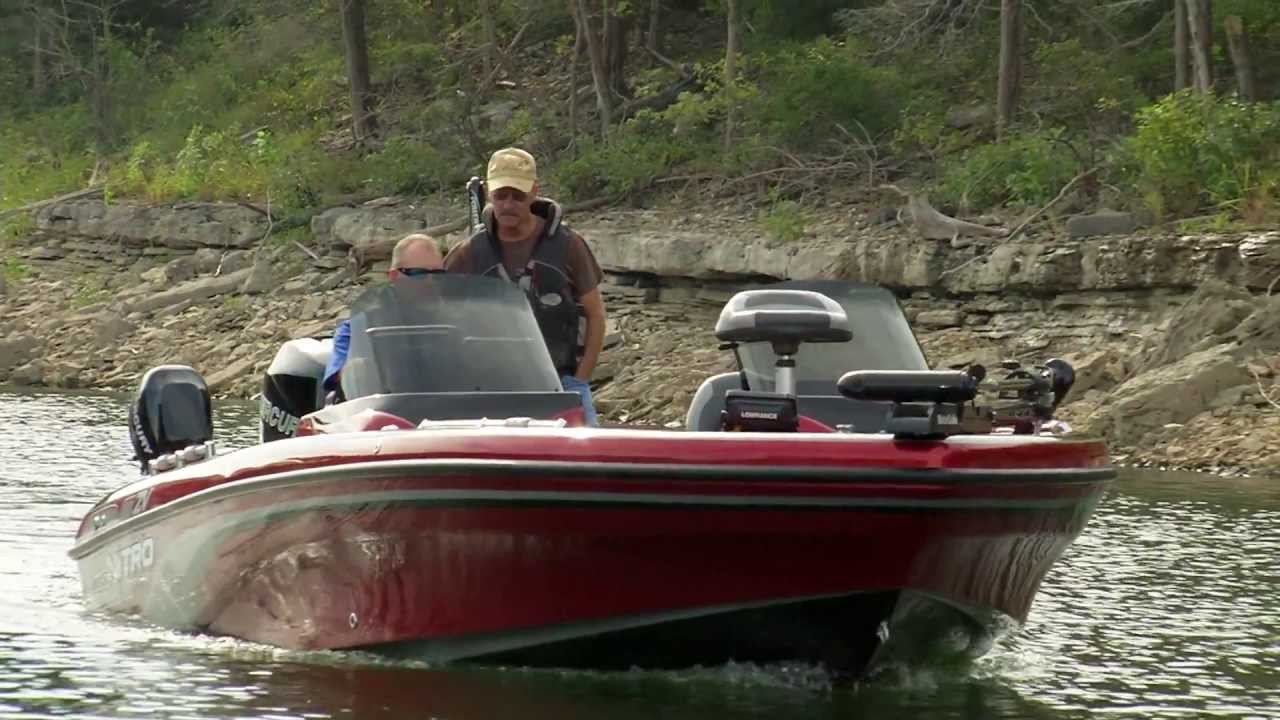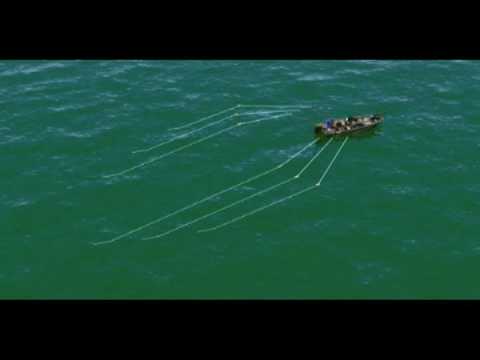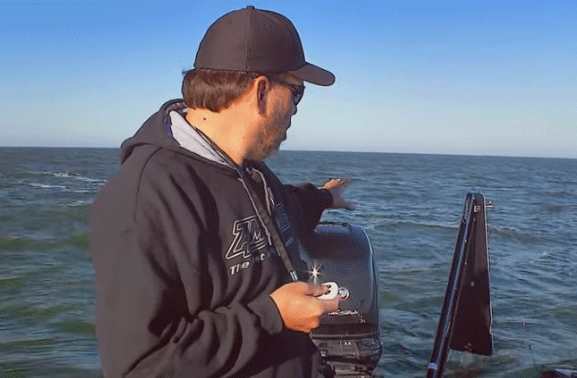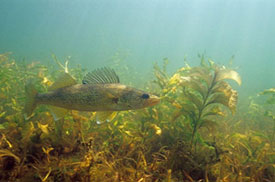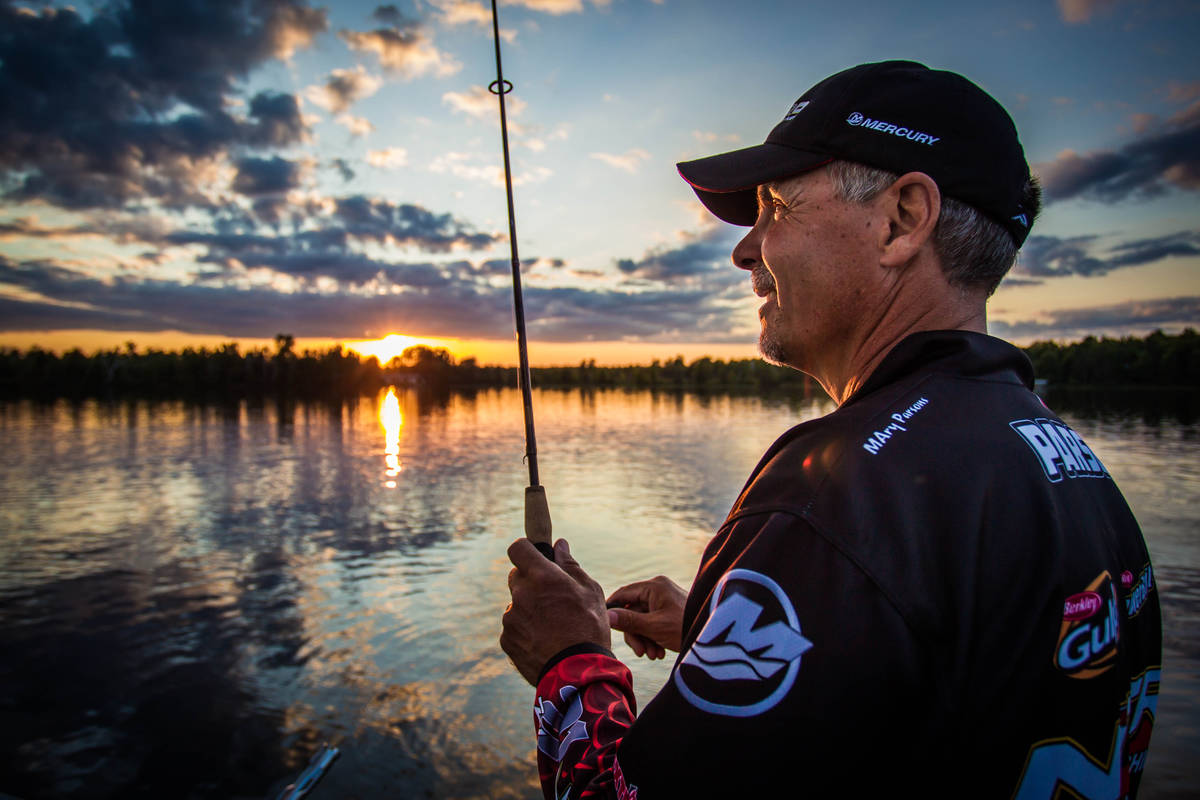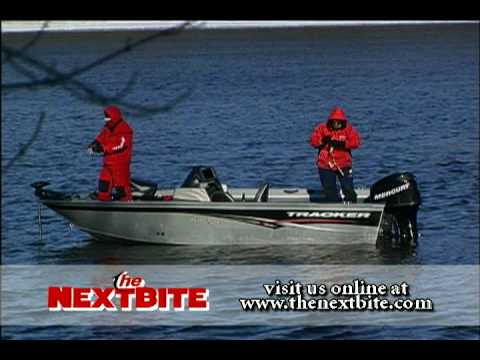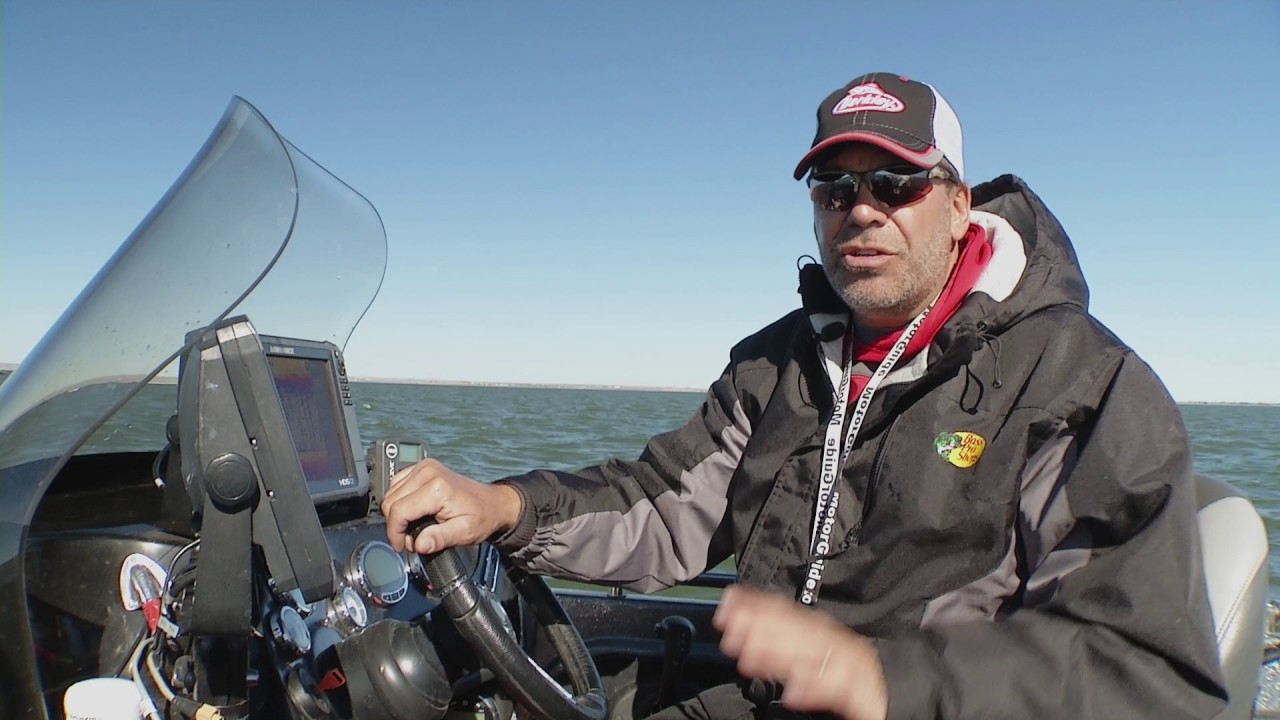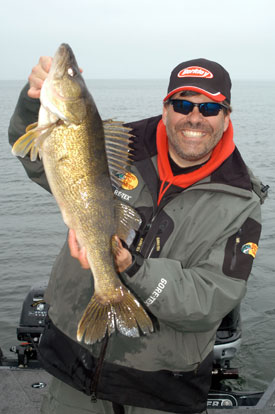
Water bodies such as the Great Lakes or large natural lakes like Wisconsin’s Lake Winnebago, feature immense areas of open water in the lake’s basin area. The practice of trolling for walleyes over these vast areas has become increasingly popular among walleye hunters the past several years. Open water walleyes relate to baitfish that roam these basins in the summer. In most cases fish will be suspended in the water column, but will occasionally be found hugging the bottom. No matter where they are hangin’, keep in mind that these fish feed in an upward direction. This is important, because when running your lures, you’ll need to target depths at the same level, or above where the walleyes are located. Experimenting with lure depth will zero-in on the walleyes’ “feeding zone”, which is the depth at which they will most likely attack your bait.
Total Solutions Technique
First ya gotta find’em!The first key to successfully catching open water suspended walleyes is to find them. Use your electronics to scan potential areas and look for signs of either baitfish or larger individual fish suspended in the water column. Once you see signs of fish on the locator, determine the depth they are at and set out your lures accordingly. Depending on the depth you are targeting, you can adjust the amount of line out or even add a weighting system if needed to get the lures to the desired depth. It’s a good idea to run lures both at and just above the fish being marked to fine tune the depth at which the fish are feeding. Don’t be afraid to occasionally run a bait high in the water column too. At times, the most aggressive fish will feed only a few feet below the surface. It’s very important to know the baits you are running and at what depths they will run at various lengths of line out in order to be an effective troller.
Normal trolling speed for crankbaits will be in the 1 1/2 to 2 mph range. However, in the warm waters of summer, walleyes can be more aggressive and often a trolling speed closer to 3 mph can often trigger more bites. Experiment to find the right speed for the day.
Since you’re trying to cover vast areas of open water, using in-line trolling boards to spread out your trolling pattern is very important. The boards will not only allow you to cover a wider swath of water on each pass, but also get your baits out away from the boat cutting down on any spooking that may occur due to the boat moving over the fish.
Total Solutions Equipment
To be an effective crankbait troller takes the right combination of gear. Long trolling rods in the 7 to 8 ½ foot range and line counter reels are the best suited rod and reel combos to use. Line counter reels allow you to easily monitor the amount of line out for each lure and once you find a fishing catching pattern, duplicate that pattern for the rest of your set-ups.
The standard trolling line for most applications is Berkley Trilene XT in 10 pound test. This monofilament line has just the right diameter to allow lures good diving depth, while also being tough enough to handle such trolling accessories as snap on weights and trolling boards. It also has just the right amount of strength and built-in stretch to help take some of the “umpf” out of a big walleye’s fight and help you to get him in all the way to the net. If you need to get a bit more diving depth from your lures in order to put them in the fish zone, then run them on 10 pound test Berkley FireLine. This no-stretch line has the same diameter as 4 pound test mono which will can allow your baits as much as 30% more diving depth.
Crankbaits for summer walleyes should have a moderate to aggressive action. This will give off the amount of vibration needed to call fish in from longer distances. Lures with a loud rattle system can also be a big advantage when trying to attract open water walleyes. Berkley Flicker Shads in the 5mm and 7mm sizes are ideal for this technique. The Flicker Shads have a unique – higher pitched – rattle that walleye in particular seem to key on. As for choosing crankbait colors, a general rule-of-thumb would be to use bright colored lures in off-colored water and natural colors or metallic patterns in clear water. For open water some of my all around favorites are Purple Tiger, Hollywood and Chrome Clown.
 Berkley® Trilene XT® |
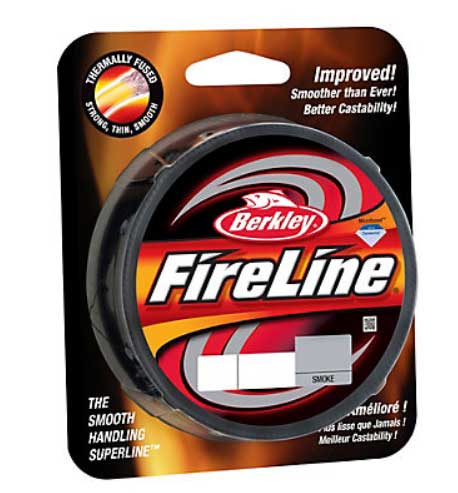 Berkley® FireLine® |
Berkley Flicker Shads |

